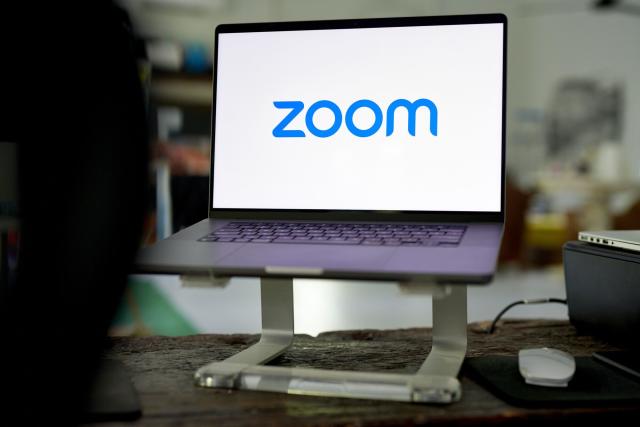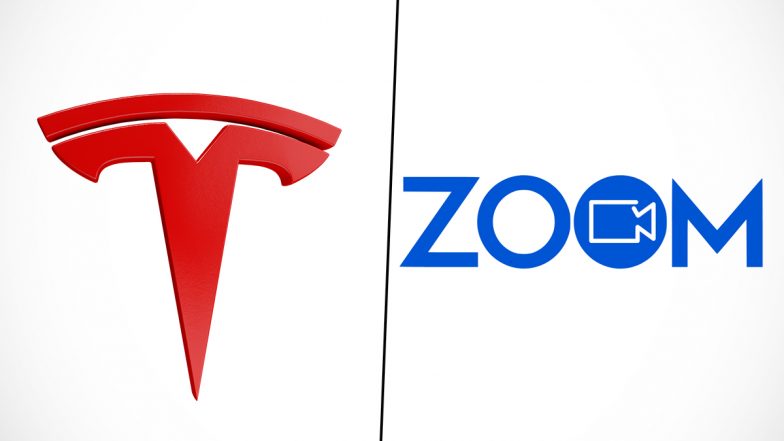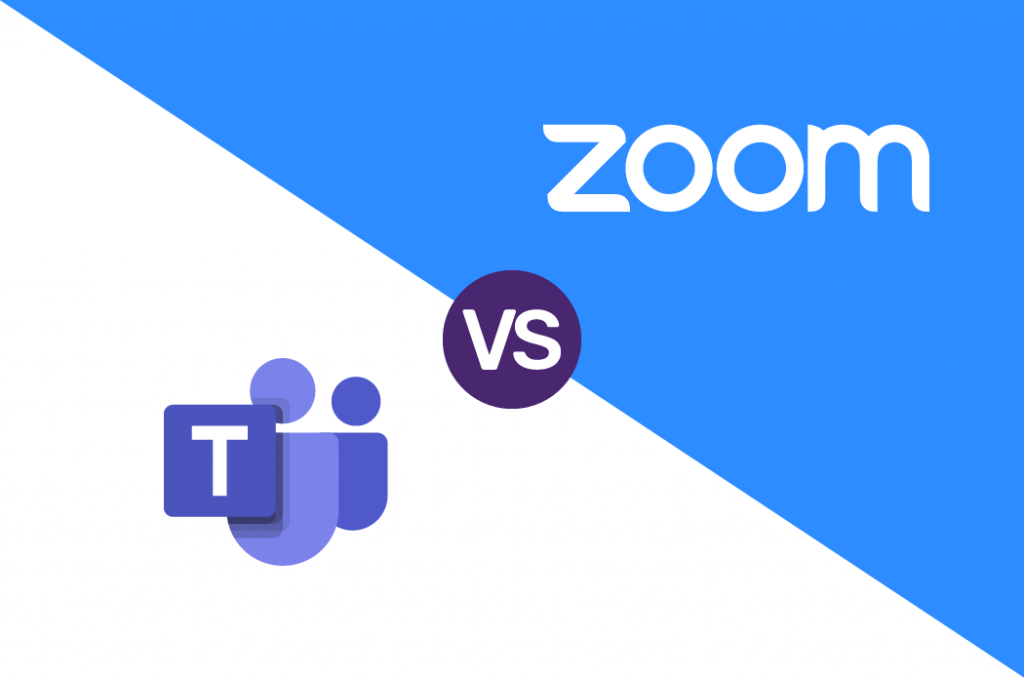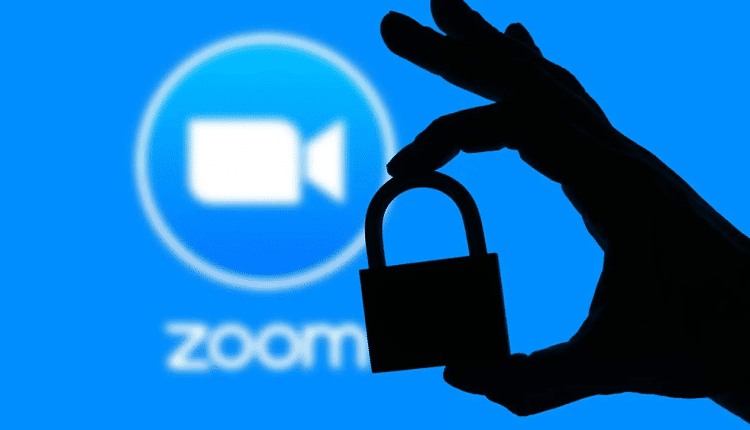How does Apple’s Vision Pro Improve Your Zoom Call Experience?

I am a law graduate from NLU Lucknow. I have a flair for creative writing and hence in my free time work as a freelance content writer.

I am a law graduate from NLU Lucknow. I have a flair for creative writing and hence in my free time work as a freelance content writer.
Zoom Video Communications, a key player in the communication and collaboration software market, is gearing up to take on Microsoft’s Teams with a slew of new features and tools.

As of the first quarter of this year, Zoom controlled only about 7% of the market, while Microsoft dominated with a 42% share, according to industry analyst IDC. In a move aimed at enhancing collaboration, Zoom announced on Tuesday that it will be adding word processing capabilities to its suite of tools. This includes collaborative document editing, a feature reminiscent of Alphabet’s Google Docs. However, what sets Zoom apart is its innovative integration of information and artificial intelligence-generated summaries from Zoom meetings directly into the document editing process, as revealed by Chief Product Officer Smita Hashim in an interview.
Zoom’s meteoric rise during the pandemic, with its fiscal-year revenue surging over fivefold to $4.1 billion from 2020 to 2022, has plateaued as offices reopened, and competition, especially from Microsoft, intensified. Analysts now anticipate a modest growth of less than 2% in the coming quarters. To counter this, Zoom aims to diversify its business tools beyond video meetings. This strategy includes incorporating features from Workvivo, an employee communication service it acquired in April.
Zoom has found success with its office phone service, generating approximately $500 million annually, and its customer-service center offering, which has attracted over 500 clients. Despite these positive developments, Microsoft’s Teams remains a formidable adversary. Zoom executives have met with regulators in both the U.S. and the European Union to voice concerns about Microsoft’s preferential treatment through design and price bundling.
To stay ahead, Zoom is experimenting with novel features, as revealed in recent patent filings. These include interactive virtual objects in meetings for purposes such as product advertisements or education. Another patent shows a feature that scans the “nonverbal cues” of meeting participants, providing prompts based on their expressions.
Also Read: Ex-Googler’s Struggling Search Startup Becomes Antitrust Cautionary Tale
In September, Zoom introduced AI features, such as call summarization and message drafting, included in paid plans at no additional cost. Hashim emphasized that these AI features are not promotional pricing and are committed to remaining free for users.
As Zoom seeks to expand its suite of tools, the company is confident that customer interest and adoption will continue to rise. “The focus right now is bringing more and more value to customers through these kinds of cross-product journeys,” Hashim said. Time will tell if these innovations will be enough for Zoom to bridge the gap with Microsoft and secure a more significant share of the competitive communication and collaboration software market.

I am a law graduate from NLU Lucknow. I have a flair for creative writing and hence in my free time work as a freelance content writer.
On Tuesday, Zoom revealed a partnership with the world’s largest manufacturer of electric vehicles, Tesla, to enable video conferencing in cars. The news was revealed during Zoom’s yearly Zoomtopia conference, where the company routinely reveals upcoming features to assist remote calls.

Zoom is collaborating with the Elon Musk-run Tesla to integrate video conferencing features into electric automobiles. Natasha Walia, group product manager for Zoom, made the revelation at the Zoomtopia 2022 Event on Tuesday and showed a quick video of it in action in a Tesla Model Y.
Zoomtopia is a conference where Zoom routinely reveals upcoming features to assist remote calls. The Zoom application is likely to utilize Tesla’s in-cabin camera, which is placed above the rear-view mirror. The camera would be as a live feed in the Zoom app and the driver can also what the camera is monitoring.
Nitasha Walia, group product manager at Zoom noted at the event, “You’ve been zooming from your home, your office, your phone and even your TV. We’re going to make it even easier for you to zoom from anywhere.”
Although the feature has earlier sparked worries over driver privacy, the cabin camera’s primary purpose is to monitor driver alertness while Autopilot is activated and allows the vehicle to offer aural alerts or warnings. Additional questions about the access privileges given to third-party apps may be raised if Zoom uses the in-car camera.
There is no set timeframe for the arrival of Zoom integration, but it will come to “all new Tesla models soon.” Other information, such as whether Zoom will only function on WiFi or whether Tesla customers who right now pay for the Premium Connectivity add-on will be allowed to make calls using the car’s data plan, is still unknown.
As per Verge, Zoom calls will probably be disabled unless the car is parked because the feature’s demonstration video doesn’t show the vehicle moving during a call.
Tesla has been considering the feature itself for years. Zoom calls in Tesla automobiles are “definitely a future feature,” Elon Musk stated in a tweet in May 2020. Drivers claimed it would provide them another private capacity to take calls and take advantage of the available in-camera, present in certain Teslas, and large display, In the initial days of the Covid-19 outbreak, Musk received a plethora of tweets asking for Zoom integration.
At the event, Zoom also unveiled several new features. Users can now access their calendars and emails without leaving the Zoom platform with the help of Calendar Clients and Zoom Mail. Prominent calendar and e-mail services will be directly integrated into Zoom, allowing users to access their conversations and appointments more quickly and collaborate more effectively.
The company stated that only users in Canada and USA would have access to the beta versions of the Calendar Clients and Zoom Mail. Zoom Spots, a persistent video-enabled place incorporated within the Zoom service, will launch in early 2023 to promote inclusive conversations and keep coworkers engaged.
When it launches in early 2023, Zoom Virtual Agent will be able to be used both as an independent chatbot and as a fully integrated part of Zoom Contact Center.
The Zoom news arrives as traditional automakers like General Motors, Ford, and Volkswagen, together with Tesla, confront increasing competition in the market for electric vehicles. Investors are worried that Musk’s acquisition of Twitter may cause him to become too preoccupied to properly solve Tesla’s issues.
Zoom and Musk’s businesses haven’t always had a cordial working relationship. For instance, in April 2020, SpaceX forbade its staff from using Zoom due to serious security and privacy concerns.

I am a law graduate from NLU Lucknow. I have a flair for creative writing and hence in my free time work as a freelance content writer.
The global pandemic has increased the demand for video calling apps to several folds within a few months. Since the entire world is getting accustomed to the new normal, from kindergarten kids to business professionals are relying on videoconferencing applications. Among the many video conferencing apps, it was Zoom that started owning the market at the beginning and was extremely successful. But, it was soon followed by zoom bombing and then sharing the market with Google Meet and Microsoft Teams.
With that being said, just days after Zoom announced that it will lift the 40 minutes meeting timing for Thanksgiving Day, Microsoft Teams comes with a brand new option of free all-day video and voice calling. The latter is rolling out a bunch of new options to give a hard competition to Zoom and attract Zoom users to its platform. The company confirmed the news through a blog post.
The new all-day video and voice calling option will not only be hard on Zoom but Google Meet as well. The free 24 hrs calling will allow 300 participants to connect be it a video call or a voice call. Apart from the free all-day calling the platform is also expanding its ability to create a group chat maximum of 250 participants. The user will see up to 49 members simultaneously during virtual conversations. The company hasn’t specified if there is an end date to this free 24-hours calling. This new feature will immensely help existing users and attract new users as well. With Zoom’s compromised security then deciding to enable end-to-end encryption for only paid users followed by rolling it out for everyone has signaled instability of the platform. So, maybe this new feature of MS Teams will make it own the market.

Apart from expanding the chat capability, Microsoft is also adding support to upload and share photos and videos from your computer. Users can share these directly in any group chat or video chat. Both the Teams desktop and the web apps are including more options letting professionals add their account to chat with friends and family.
The company has mentioned that like every other video conferencing platform, it is not mandatory to have a Microsoft account to attend a meeting. The user can join a Microsoft Teams meeting without opening an account or installing the Teams app only by clicking on the link that has been sent by the host. Users can simply attend the meeting from the web browser. Moreover, the platform is trying to connect as many people as possible by getting seamless syncing of chats between the phone and the computer. As mentioned earlier, the platform will also show 49 others in the meeting in a gallery view similar to the Zoom app. This is done by using the Together Mode feature in MS Teams.
Apart from overall updating the Microsoft Teams platform, the mobile users can communicate with their contacts that do not have Teams on their smartphone. The chosen contact by the user will receive an SMS and the receiver can respond to it via simple text messages. Moreover, the recipient will receive a link to download Microsoft Teams on their phones. The SMS support will be available to the Teams app in preview only for US and Canadian users. An additional feature of adding group events from chat to the device calendar will also be available. Users can also get task and location updates in the activity feed along with adding photos to the personal Safe. The new location feature is made to let your family and loved ones know about your whereabouts so that you are safe. They will receive alerts during your departure and arrival time as well. Microsoft Teams is trying to make the platform as personalized and secure as possible for the users. The company also says that they are expecting the feedbacks are the user input matters a lot.
Last month, the company announced that it surpassed the mark of 115 million daily active users and they want to make it a communication solution for everyone.

Annasha Dey is an NIT student, who apart from studying engineering is also a content writer. She has a great interest in photography, writing, reading novels, and travelling as well. She is a foodie who loves socializing and hanging out with her friends. She is also a trained Kathak dancer and a big fashion enthusiast. Dey also loves watching TV series, which includes F.R.I.E.N.D.S. and Big Bang Theory. To be a better writer she prefers to read more
On 14th October 2020, Zoom announced that it will be rolling out End-to-End Encryption (E2EE) from next week. From the beginning of the pandemic this year till now, Zoom has experienced both high stiff success and failure simultaneously. In the first few months, the new users in the Zoom platform accelerated at a very high rate. But, after the security system of the Zoom has been compromised, people started withdrawing from the platform as their privacy was at risk. Soon after the Zoombombing, we heard that Zoom launched End-to-End Encryption which was nothing but a hoax. But this time Zoom is genuinely starting E2E for the participants using the platform.
Zoom, in one of its blog posts, said that they are excited to roll out the E2EE in the coming week as a technical preview. For the first 30 days, they will be soliciting feedback from the users both free and paid. Zoom is rolling out the feature across the world and the host can add a maximum of 200 participants in an E2EE meeting and enjoy a more private and secured meeting. This is Phase 1 of the E2EE offering. There are three more on its way. Eric S. Yuan, CEO of Zoom, said that the company is rolling out E2EE to make Zoom the most secure communication platform in the world.
In a Zoom meeting, the Zoom cloud generates encryption keys that are distributed among the participants attending the meeting via the Zoom app. But, with the E2EE offering of the platform, the host will generate the encryption keys which will be distributed among other participants using public-key cryptography (generated in the device of the individual participant). This way the encryption keys cannot be decrypted and the content will become less vulnerable to leakage. The E2EE offering provided by Phase 1 is the same as the end-to-end encryption provided by any messaging platform. Zoom is striving to roll out this offering since May as the reputation went down due to compromised security.
At first, the company decided to roll out this feature exclusively for paid users. But, after receiving plenty of criticism the company has decided to make it available for both paid and free users. In this case, the free users need to go through an extra verification process to make sure that the user is genuine and to reduce the chances of any abusive content. To create or join an E2EE meeting, the user might need to verify the phone number or provide any additional piece of information.

To participate in an E2EE meeting, the user must enable the E2EE meeting at the account level. Under Encryption select “End-to-end encryption” and opt-in to the same on a per meeting basis. If you are hosting a meeting, you can enable the E2EE setting for account, group, and user-level and the same can be locked at account or group level. The participants can join an E2EE meeting via Zoom desktop client, mobile apps, or Zoom Rooms.
After you enter an E2EE meeting, you can look at the upper left corner where you will find a green shield logo with a padlock in the middle of it. This is the indication that your meeting is E2E encrypted. This is similar to the GCM encryption logo but here the checkmark has been replaced with the padlock. The security code of the host is also visible to the participants so that they can verify if all the participants can see the same code. Before rolling out Phase 2, this is the level of security Zoom will provide to each one of its users.
Since this encryption is the first phase of the four, there are certain limitations. Some of the limitations are you won’t be able to join before host, you will not have access to cloud recording, no access to streaming, live transcription, Breakout Rooms, polling, private chats, and meeting reaction. Though you will have an option to enable E2EE, one must prioritize if accessing all these features is more important than an extra layer of security. The next phase of the E2EE offering is tentatively scheduled for 2021.

Annasha Dey is an NIT student, who apart from studying engineering is also a content writer. She has a great interest in photography, writing, reading novels, and travelling as well. She is a foodie who loves socializing and hanging out with her friends. She is also a trained Kathak dancer and a big fashion enthusiast. Dey also loves watching TV series, which includes F.R.I.E.N.D.S. and Big Bang Theory. To be a better writer she prefers to read more
The ongoing COVID-19 pandemic has given rise to the massive exodus to remote working in our history. Due to the travel bans and lockdowns, a good portion of the world’s white-collar workforce is now working from home. As a result, internet services, remote working services, and video calling applications have been witnessing exponential rises in user strength. That is why, in the last few months, several companies have branched into or improved their video-calling and remote-working enabling technologies. Zoom has been a significant player in the field of remote communication, and they are now working towards expanding their current line-up. Here’s a look at how Zoom will be improving accessibility by making their service compatible with new devices.
Zoom has released plans that will see it expanding to several new devices before the end of this year. Recent announcements state that the company will be making its services available through Facebook Portal, Amazon Echo, and even Google Nest Hub Max. The move is a significant expansion plan for the video conferencing conglomerate that has been having a successful year so far. Furthermore, the company also has plans to branch out into their unique line of video conferencing hardware solutions. These devices which will feature advanced directional microphones, smart displays, and built-in high-quality touchscreens, will provide users with a great video conferencing experience.
Zoom’s announcement that it will launch a new touchscreen device shocked several experts around the world. The device, titled Zoom For Home — DTEN ME, will start shipping in August and will cost $599. This 27-inch smart display touchscreen device will feature three webcams and eight built-in state-of-the-art noise-reducing microphones. The device also comes preloaded with the Zoom app, and the company is launching this project in collaboration with DTEN. DTEN will handle the hardware part of the device, being a San Jose-headquartered company that deals in videoconferencing technology manufacturing.
The device has a simple and intuitive interface, featuring contact displays, meeting dashboards, and whiteboards. Though experts feel that $599 might be steep for such a device, the company explained that the system made it easier for people to work remotely. They will no longer have to install the app or configure it on their various devices if they use the DTEN.
Zoom’s integration with Amazon, Facebook, and Google will prove to be an important strategic decision for the future. It will also bring forth massive changes for these tech giants. Prior to this, these companies have exclusively stuck to their own unique in-house chatting services. While Google relied on Google Meet, Facebook users made use of Facebook Messenger for video conferencing. Reports state that the Portal will be the first third-party service to avail of Zoom, and the initial roll-out phase will happen in September.
However, all three companies will be implementing this integration in different ways. Facebook will add the Zoom App, along with a bunch of new services, including Webex, BlueJeans, and GoToMeeting. Furthermore, the application will use the smart camera provided and powered by Facebook to keep users in the frame, the same way Messenger and Whatsapp work. Zoom will be available on the Portal +, Portal Mini, and Portal devices, with Portal TV coming into the fold shortly.
Also, the social media giant will make Portal less reliant on Facebook accounts. The addition of a Workplace account for the Portal will help users log in without having to use their Facebook or Whatsapp accounts. Facebook states that the inclusion of such a Work account will become available in the weeks to come.
Meanwhile, Google will rely on Calendar and Assistant to pull and add Zoom meetings for its users. Furthermore, the tech giant will also allow users to start sessions using voice commands through its Assist feature. However, since the Nest Hub can link only to a single account, users may find it challenging to juggle meetings and personal video calls through Zoom.
Amazon will be taking a similar approach with Alexa, allowing Echo Show systems to sync with the calendar and Virtual Assistant. Doing so will enable the system to automatically join meetings without users having to input IDs and passwords. The system will also support all Alexa voice commands, with the rollout beginning later this year with the Echo Show 8.
It will be interesting to see how this cross-over pans out for everyone involved. With the roll-out becoming functional from September, we might be able to see this move impact sale of Zoom’s hardware devices. As per Zoom CPO Oded Gal, this move will make it easier than ever before for people to use video communication effectively in both their professional and personal lives.

Being a cinephile with a love for all things outdoorsy, Athulya never misses a chance to chase inspiring stories or poke fun at things, even when the subject is herself. Currently pursuing a degree in mechanical engineering, she is someone innately interested in technical and scientific research. Music reviews and op-eds define her as they allow her to explore different perspectives. Though sometimes she thinks she makes more sense playing the guitar than she does while writing.